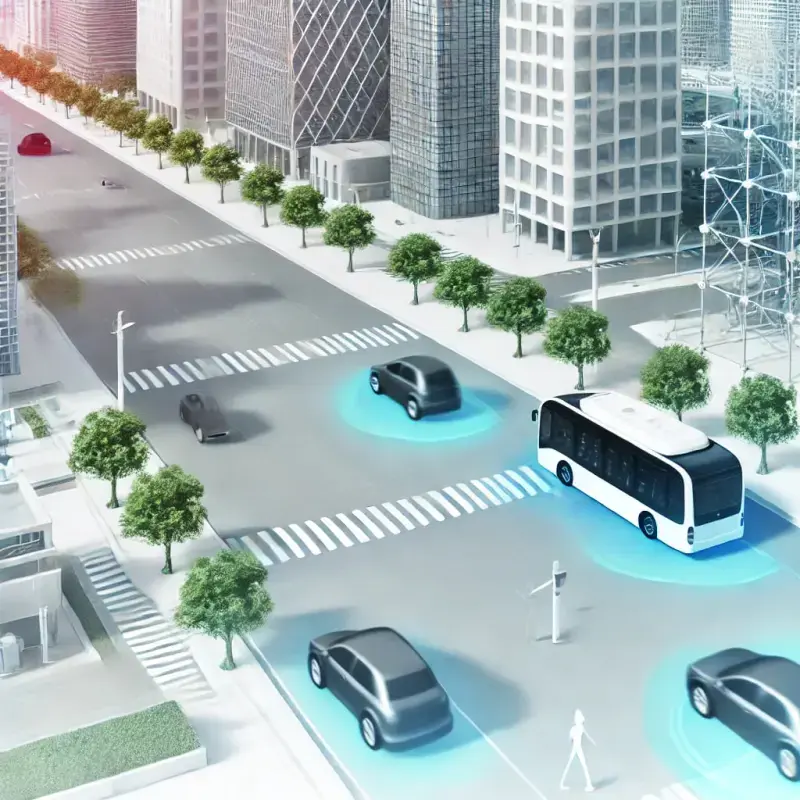The Development of Autonomous Transportation Technology in Cities and Its Integration into Infrastructure
Autonomous vehicles (AVs), also known as self-driving cars or driverless vehicles, have emerged as a transformative force in urban transportation. As technology continues to advance, the integration of these vehicles into city infrastructure is becoming a reality, promising a future where transportation systems are more efficient, sustainable, and convenient.

A Shift Towards Smart Cities
In recent years, urban centers across the globe have been evolving into smart cities. These cities leverage advanced technologies to enhance the quality of life for residents by optimizing energy consumption, reducing traffic congestion, and improving overall mobility. Autonomous transportation plays a key role in this transformation, offering the potential to revolutionize the way people and goods move within urban environments.
The Role of Autonomous Vehicles in Urban Transportation
Autonomous vehicles are equipped with sophisticated sensors, cameras, and artificial intelligence (AI) that enable them to navigate roads and traffic without human intervention. These vehicles are designed to improve traffic flow, enhance safety, and reduce emissions. As AV technology continues to mature, cities are preparing to integrate driverless cars and buses into their existing transportation systems.
In cities where traffic congestion is a major concern, autonomous vehicles offer the potential to create more efficient roadways. By communicating with each other and city infrastructure, such as traffic lights and road sensors, AVs can adjust their speed, reroute to avoid delays, and maintain optimal traffic flow. This level of coordination can lead to reduced traffic jams, shorter commute times, and increased fuel efficiency.
Integrating Autonomous Vehicles Into City Infrastructure
The integration of autonomous vehicles into urban infrastructure requires a multi-faceted approach. Cities need to update their roadways, install new technologies, and establish regulatory frameworks that support AVs. Key elements of this integration include:
-
Smart Traffic Management Systems: Smart cities rely on advanced traffic management systems to control the flow of vehicles and ensure road safety. These systems use data collected from sensors, cameras, and other connected devices to monitor traffic conditions in real-time. With the addition of AVs, these systems will be able to communicate directly with vehicles, optimizing routes and managing traffic patterns to reduce congestion.
-
Dedicated Lanes for Autonomous Vehicles: Some cities are considering the implementation of dedicated lanes for autonomous vehicles. These lanes would allow AVs to travel without interference from traditional vehicles, enhancing their efficiency and safety. Dedicated lanes could also help to accelerate the adoption of AV technology by providing a controlled environment for testing and deployment.
-
Urban Mobility Hubs: As AVs become more common, urban mobility hubs are expected to emerge in key locations within cities. These hubs would serve as central points for ride-sharing services, public transportation, and other forms of urban mobility. AVs would play a central role in these hubs, providing seamless and efficient transportation options for residents and visitors alike.
-
Parking and Charging Infrastructure: The widespread adoption of autonomous vehicles will also require changes to parking and charging infrastructure. As AVs are typically electric vehicles, cities will need to invest in charging stations to accommodate the growing number of electric autonomous cars. Additionally, autonomous vehicles could park themselves in designated areas, optimizing space utilization and reducing the need for traditional parking lots.
Challenges in the Adoption of Autonomous Transportation
While the benefits of integrating autonomous vehicles into urban infrastructure are clear, there are still several challenges that cities must address:
-
Regulatory and Safety Concerns: Autonomous vehicle technology is still relatively new, and cities need to develop comprehensive regulations to ensure the safe operation of AVs on public roads. These regulations must account for the complexities of mixed traffic environments, where AVs and traditional vehicles share the road.
-
Public Acceptance: The transition to autonomous transportation will require public acceptance and trust in the technology. Cities and AV developers must work together to educate the public about the safety, reliability, and benefits of driverless cars. Pilot programs and public demonstrations can help build confidence in AV technology.
-
Cost of Infrastructure Upgrades: Upgrading urban infrastructure to accommodate autonomous vehicles can be costly. Cities will need to invest in new technologies, such as smart traffic systems and charging stations, to fully support AVs. These investments, however, have the potential to deliver long-term benefits in the form of reduced congestion, improved safety, and lower emissions.
The Future of Autonomous Transportation
Despite the challenges, the future of autonomous transportation is bright. Several major cities around the world are already testing autonomous vehicles in limited capacities. For example, self-driving buses are being trialed in some urban areas to transport passengers along predefined routes. Similarly, ride-sharing companies are experimenting with autonomous fleets in select cities, offering a glimpse of how AVs could reshape urban transportation in the coming years.
As autonomous vehicle technology continues to advance, cities will need to adapt their infrastructure to support this new mode of transportation. By integrating AVs into urban mobility systems, cities can create a more efficient, safe, and sustainable transportation network that benefits everyone.
Autonomous transportation represents a significant step forward in the evolution of urban mobility. As more cities embrace this technology and integrate it into their infrastructure, we can expect to see smoother traffic flow, reduced emissions, and improved public transportation systems. The road to fully autonomous cities may still have a few bumps, but the potential benefits make it a journey worth taking.
Artikel
Melden Sie sich für unsere Nachrichten an, um die aktuellsten und informativsten Artikel regelmäßig per E-Mail zu bekommen!